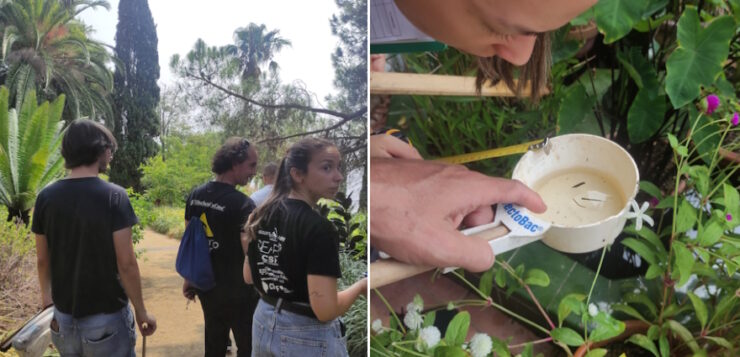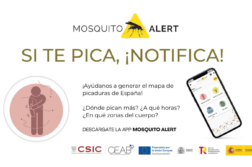The increase in human mobility, international trade and temperatures have favored it. These are global factors, with worldwide reach. But there are also local factors that can give or clip the wings to this disease-vectoring mosquito.
Sharing the knowledge obtained about what causes the abundance of tiger mosquitoes in the Mediterranean region has been one of the objectives of the 11th International Congress of the European Mosquito Control Association, held in Palma de Mallorca between the 7th and 10th of November.
Members of the Mosquito Alert and CEAB-CSIC team have explained part of the work they do in this area and the conclusions they have drawn. Among others, they have presented results obtained thanks to the collaboration with the Mar y Murtra Botanical Garden, which gives them its spaces for research.
Laura Blanco-Sierra has spoken about the study of the local drivers of the tiger mosquito carried out in the Garden. The team has assessed the effect of meteorological variables, the use of larvicides, the elimination or drainage of possible breeding sites and the influx of visitors on the density of tiger mosquitoes in this specific enclave. Research has reaffirmed that high temperatures and stagnant water in small spaces favor this dipteran. Lesser known relationships have also emerged such as the number of visitors: the more visitors, the more mosquitoes. This fact would be due to the fact that females have more blood and, therefore, more energy to lay eggs.
In her presentation – which was awarded the prize in the second best talk of the Congress – the researcher also explained that they have observed a lower effectiveness of the larvicide when it rains. The cientific team work with two hypotheses to explain this fact: one is that the product is diluted and reduces its effect; The second is that with the rain, new breeding sites are generated in nooks and crannies, which are very difficult to detect.
All these conclusions are serving to guide the control efforts of the tiger mosquito, so that they are more effective and efficient.
The prize for this talk was not the only one that the Mosquito Alert team has won. Blanco-Sierra has also obtained the best scientific poster, for the study on the adaptation of the tiger mosquito to water salinity. This distinction has been shared with Maria I.González, who will join the CEAB-CSIC shortly, and who has presented results of research on the classification of female tiger mosquitoes through genetic profiling and an optical sensor system.





